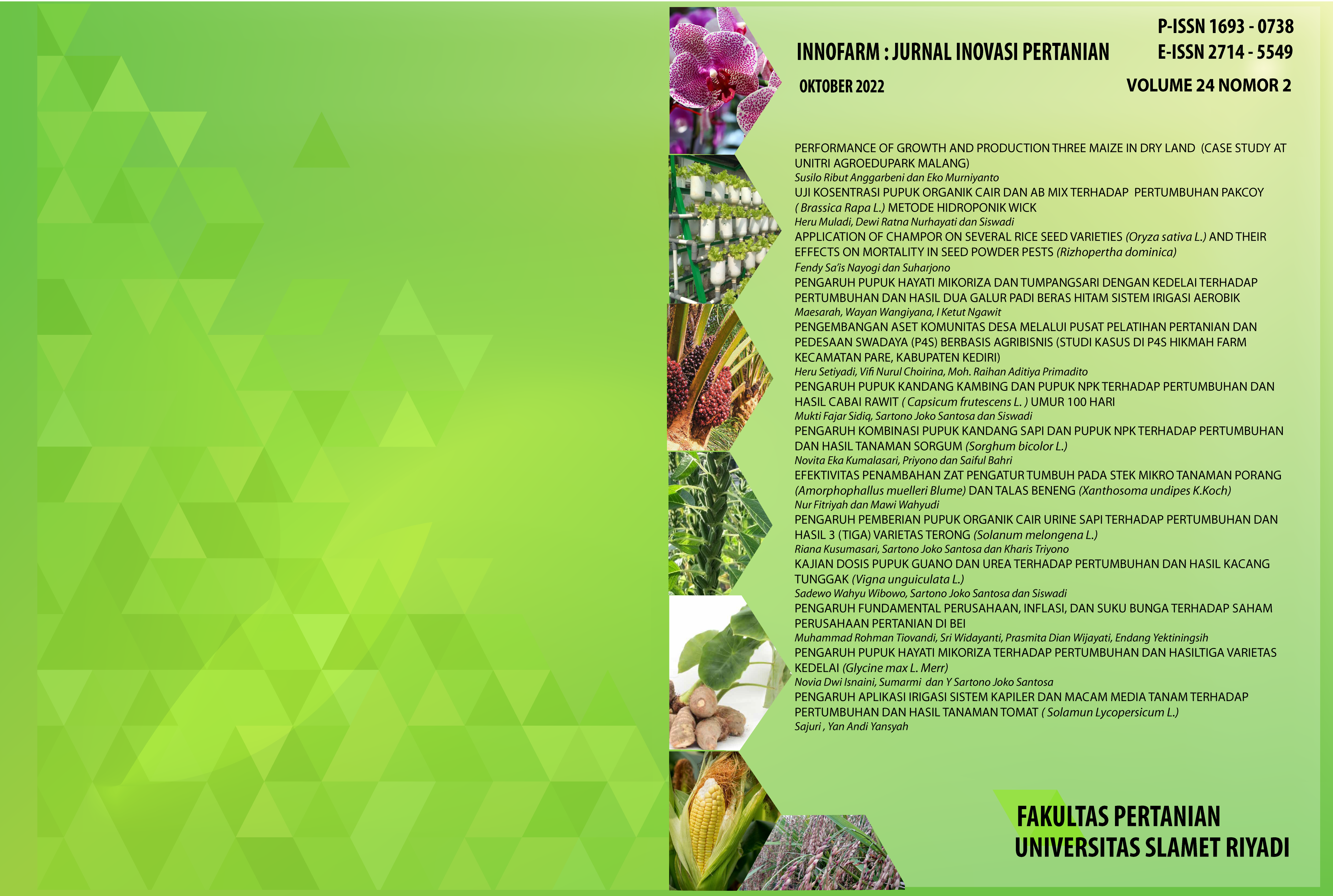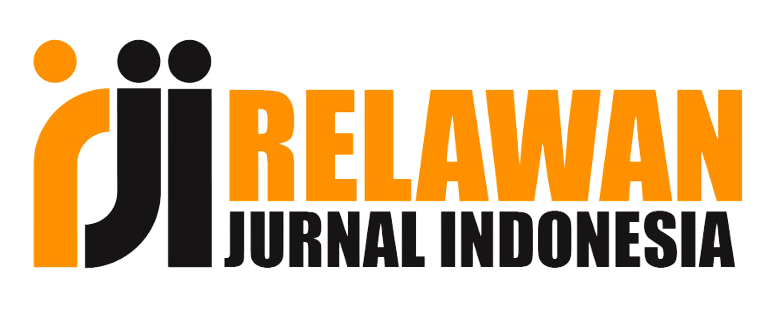EFFECT OF COW STATE FERTILIZER AND NPK FERTILIZER COMBINATION ON GROWTH AND PRODUCTION OF SORGUM PLANT
Keywords: Cow manure, NPK, sorghum, yield.
DOI:
https://doi.org/10.33061/innofarm.v24i2.7751Abstract
The study was conducted to determine the response between cow manure and NPK fertilizer which affects the growth and yield of sorghum plants. The activity was carried out in the experimental garden of the Faculty of Agriculture, Slamet Riyadi University, Surakarta on November 18, 2021 to March 16, 2022, with a 2 factor completely randomized design (CRD), then replicated 3 times. The first factor used cow manure (S) with 4 levels, namely (S0) Control, (S1) dose of 120 grams/polybag, (S2) dose of 240 grams/polybag, (S3) dose of 360 grams/polybag. The second factor is NPK fertilizer (N), (N0) Control, (N1) at a dose of 3 grams/polybag, (N2) at a dose of 6 grams/polybag, (N3) at a dose of 9 grams/polybag. The conclusion of this study is that the concentration of cow manure treatment at 120 grams/polybag and NPK fertilizer dose of 6 grams/polybag gave the best results at plant height of 260.07 cm, number of leaves 8.51 sheets, stem circumference 9.43 cm, seed weight per panicle. 169.67 grams, the number of seeds per panicle 1062.65 seeds, dry stover weight 1567.23 grams, dry stover weight 1344.66 grams.
Downloads
Published
Issue
Section
License
Copyright (c) 2022 Novita Eka Kumalasari

This work is licensed under a Creative Commons Attribution-NonCommercial 4.0 International License.
Authors who publish this journal agree to the following terms:
- Authors retain copyright and grant the journal right of first publication with the work simultaneously licensed under a Creative Commons Attribution License that allows others to share the work with an acknowledgement of the work's authorship and initial publication in this journal.
- Authors can separately make additional contractual arrangements for non-exclusive distribution published by the journal (e.g., publish it in a book), with an acknowledgement of its initial publication in this journal.
- Authors are allowed and encouraged to send their work via online (e.g., in the institutional repositories or their website) after published by the journal.


















